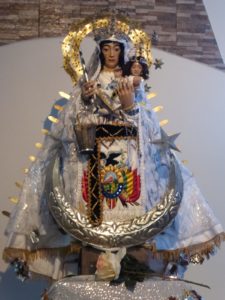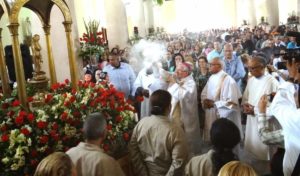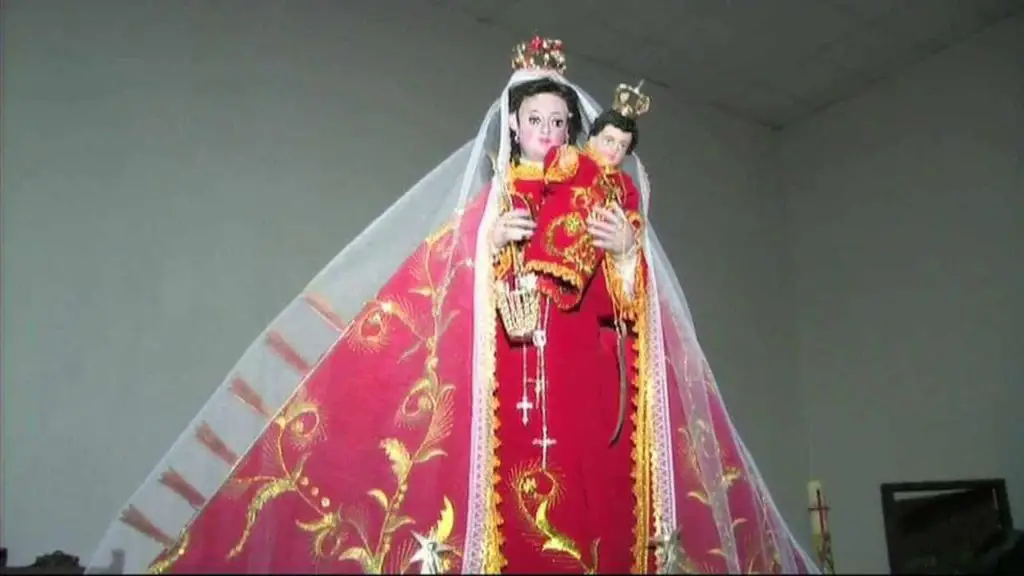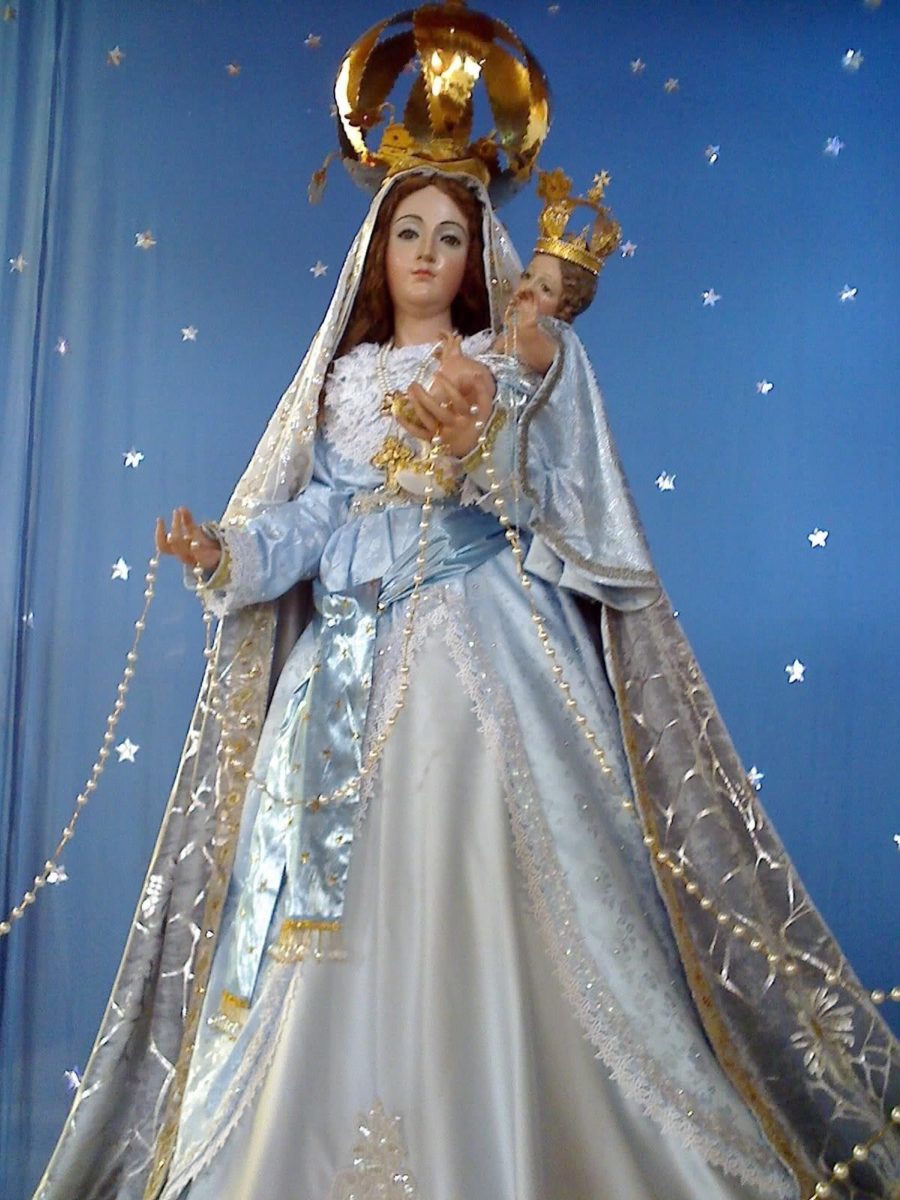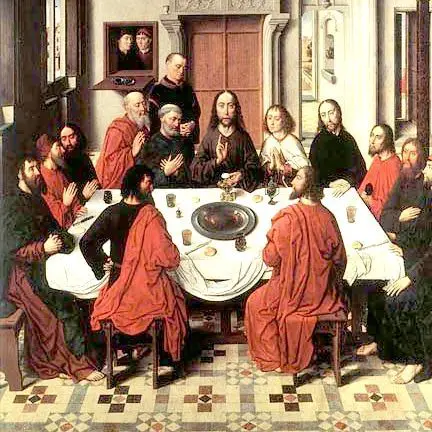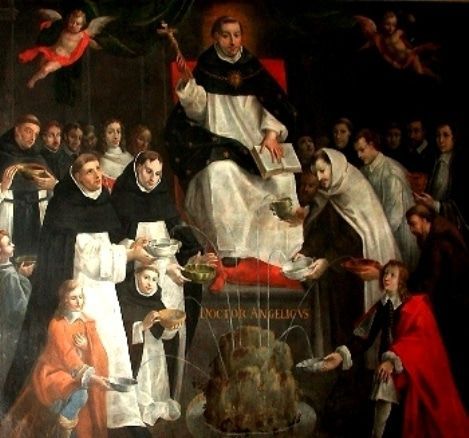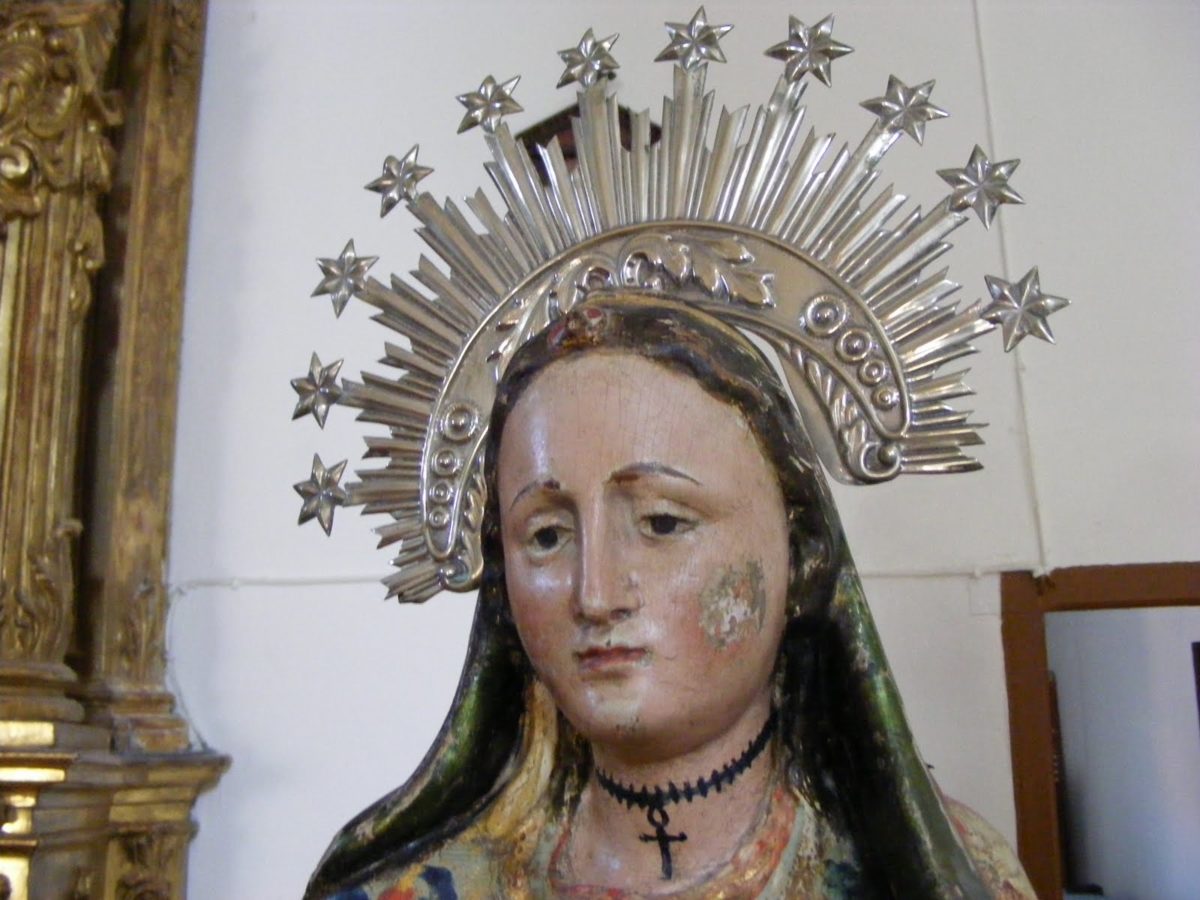The invocation of the Virgin of Copacabana is a festival or celebration dedicated to Mary as the mother of Jesus and his representative before the people. In this sense, it must be taken into account that this Virgin is the same Mary, but in the representation of a specific place.
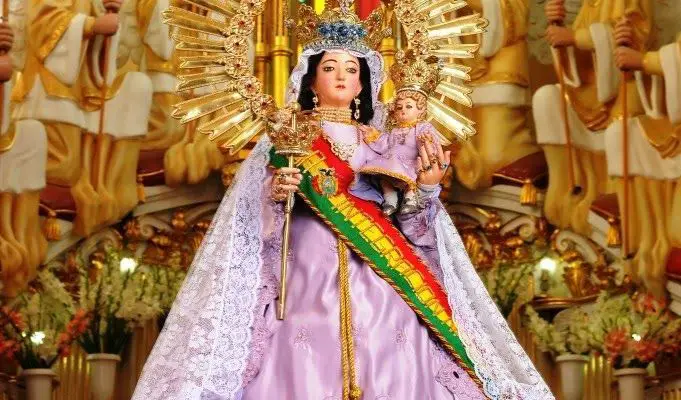
In this sense, it must be remembered that Mary has many names or titles, depending on the place where she is celebrated, or in the case of the apparitions and miracles she has performed, she is also called in different ways, such as the Virgin of Perpetual Help or the Virgin of Sorrows; these are two examples of the many names given to Mary.
The Virgin of Copacabana in Bolivia
Although this devotion to Mary is celebrated in different parts of the world, it is in Bolivia that this festival or celebration has the greatest number of followers, since it could be said that this nation is exclusively dedicated to the Virgin of Copacabana.
For this reason, it is necessary to know a little more about its history. First of all, it is necessary to analyse the day of the procession and the events that gave rise to her devotion. In this way it is possible to know a little more about the reasons why Bolivians venerate the Virgin of Copacabana.
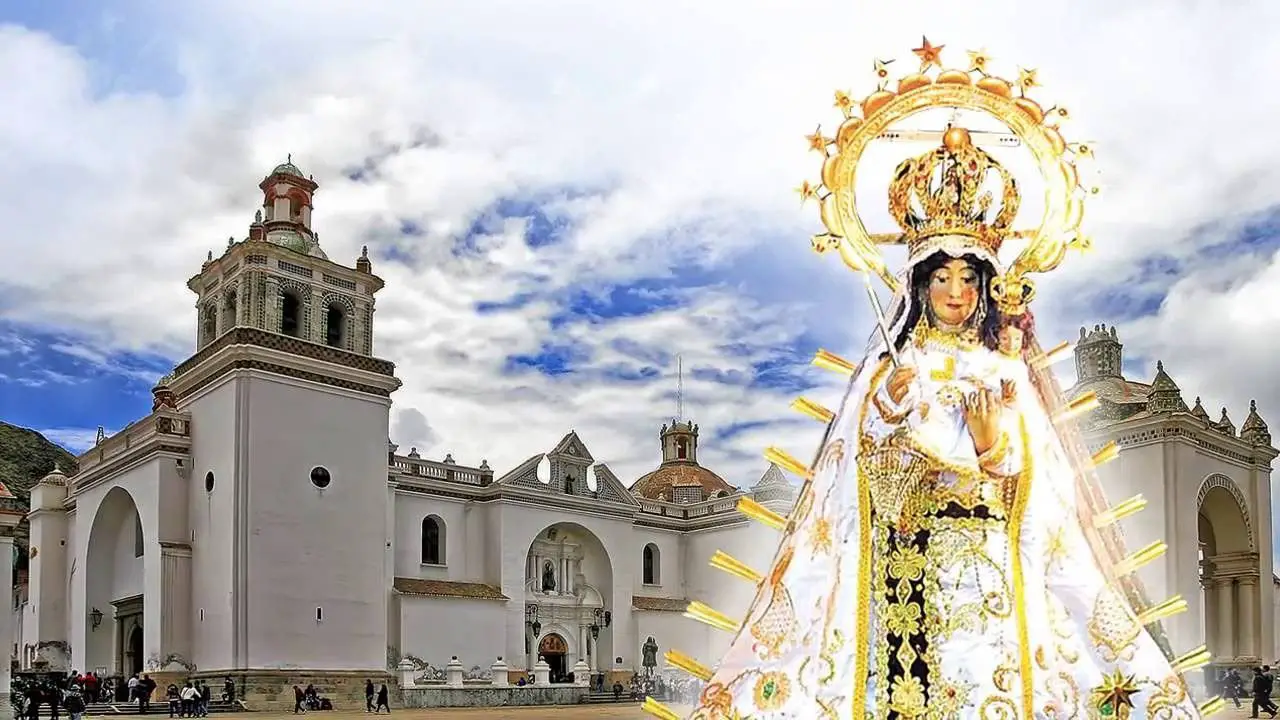
It turns out that the Spaniards, after conquering all of America, began the process of colonisation, and with it the process of evangelisation. Well, after pacifying the different ethnic and indigenous groups, different groups of friars were entrusted with the process of evangelisation.
This is how the Dominicans arrived in Bolivia and settled in Copacabana, among other places. Their process of evangelisation lasted from 1,500 thirty-nine to 1,500 seventy-four. During this period they carried out their mission, but they also spread the recitation of the Rosary, an important devotion or invocation of Mary.
Beginnings of the devotion to the Virgin of Copacabana
Later, in 1580, the indigenous groups living in Copacabana were still deeply rooted in their customs and the worship of their own gods. However, due to poor harvests and other unfortunate events, they decided to seek God’s guidance.
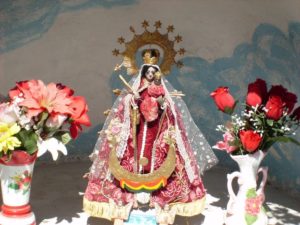
So both groups, the Anansayas and the Urinsayas, decided to create a brotherhood and dedicate it to the veneration of the Virgin of Candelaria. The other group, however, thought of dedicating the brotherhood to San Sebastian. Neither group was able to reach an agreement.
However, it was an ancestor of the Inca lineage, Tito Yupanqui, who thought that an image of the Virgin should be made and brought to the village. In this way, he thought, it would be easier to establish the brotherhood. But it turned out that Tito Yupanqui was only an amateur sculptor and had little knowledge of woodcarving.
So together with his brother he began to work on the image of the Virgin and they made it in clay. The resulting image was placed on the altar of the church by the parish priest, Antonio Almedia. He decided to place the image next to the altar, giving it a place of honour.
But when he left the town, a bachelor also called Antonio was left in charge, and when he saw the image, which was not well made and looked more like a deformed representation, he ordered it removed from the altar and had it placed in a corner of the sacristy.
Tito Yupanqui felt humiliated by this, so, on the advice of his friends and family, he went to the city of Potosí. There were some very good sculptors there, especially of sacred images. So he went to the workshop of one of these great masters and there he acquired a certain skill in sculpture and woodcarving.
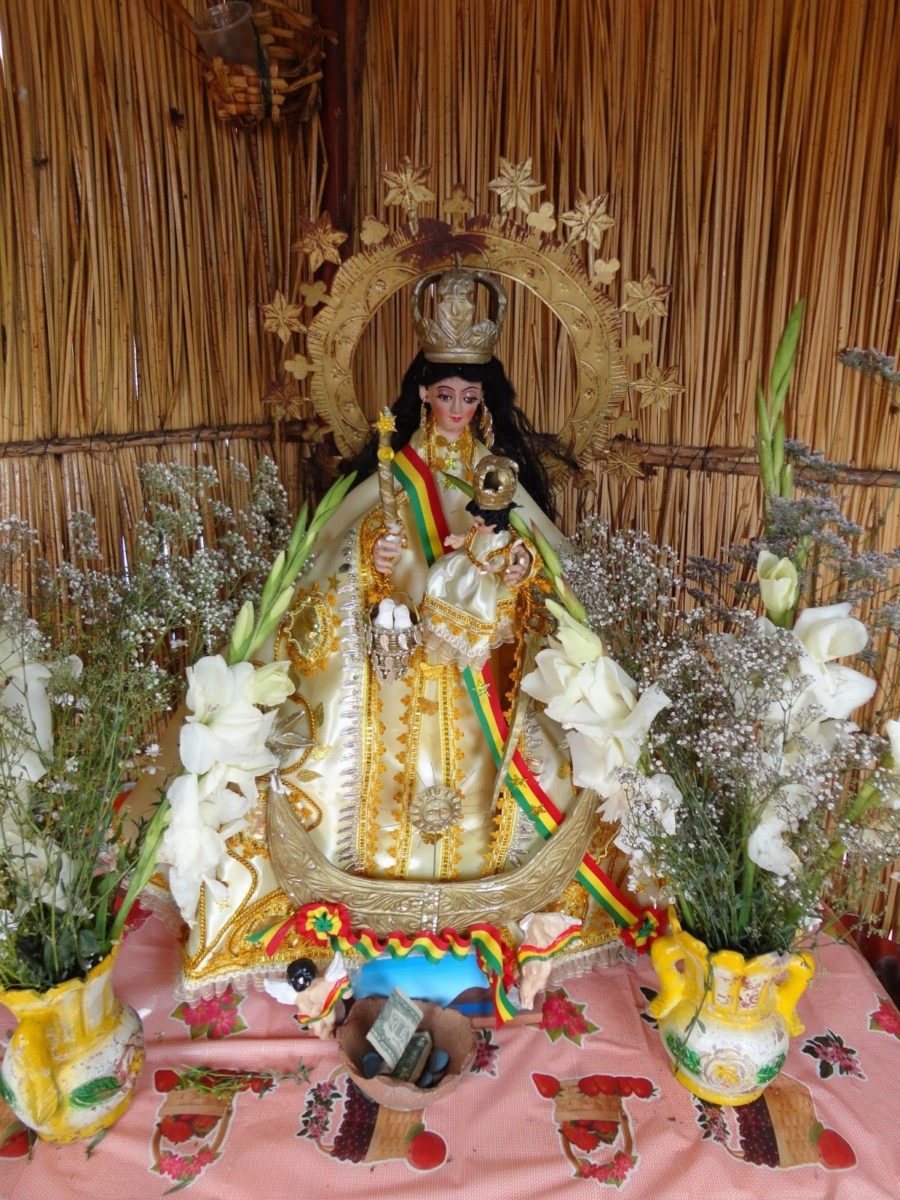
Once he had learnt the necessary techniques, he went in search of an image of the Virgin to use as a model for his own. He found the Virgin of the Rosary in the convent of Santo Domingo. He studied it very carefully in order to memorise all the details so that he would have an accurate image before beginning his own work. In fact, before he began his work, he would have Mass said so that he could receive the blessing of God and Mary so that his work would be perfect.
So Tito Yupanqui returned to his village, but the Urinsayas, although they agreed to found the aforementioned brotherhood, did not want to accept the work he had created. For this reason, Yupanqui, seeing that they wanted nothing to do with his work or the image he had made, went to La Paz, where the priest of Copacabana, having seen and analysed it, decided to take it to the city.
In this way, on the second of February of the year one thousand five hundred and eighty-three, the image of Our Lady arrived in the city of Copacabana. In fact, the shrine of Our Lady of Copacabana is one of the oldest in the continent, along with the shrine of Our Lady of Guadalupe in Mexico.
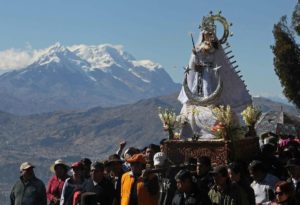
This is how the veneration of the Virgin of Copacabana was organised and began, thanks to the work of this devoted heir of the ancient Incas, who decided to offer his skills and improve them for the construction of an image that would represent her in this place.
Miracle of the Virgin of Copacabana
Well, this devotion, like all devotions to Mary, has its miracles. First of all, although it is not considered a miracle as such, the fact that this descendant of the great Incas decided to learn woodcarving in order to make an image of the Virgin promotes the humility and devotion that all those who wish to approach her should have.
It can be said that Mary, in a way, guided his hands to carry out this work. Tito Yupanqui’s humility is also reflected in the simplicity of the image, which, unlike other images, does not have any great ornamentation, but is simply made of wood.
However, the miracle attributed to him took place shortly after the arrival of the Virgin of Copacabana at her shrine. In this place, it was difficult to harvest crops because there was little rain and the soil was hard.
For this reason, the local Indians decided to dedicate a piece of land to the Virgin of Copacabana, but the other group, the Urinsayas, were still suspicious of this invocation or worship of the Virgin of Copacabana. So they did not take part in the sowing. So those who did the work reaped the fruits.
According to the chroniclers of the time, this happened in the following way: The Anansayas, having accepted the invocation and worship of the Virgin of Copacabana, went to the land and took their tools to cultivate the soil; they began to cultivate the soil, which was hard because of the drought.
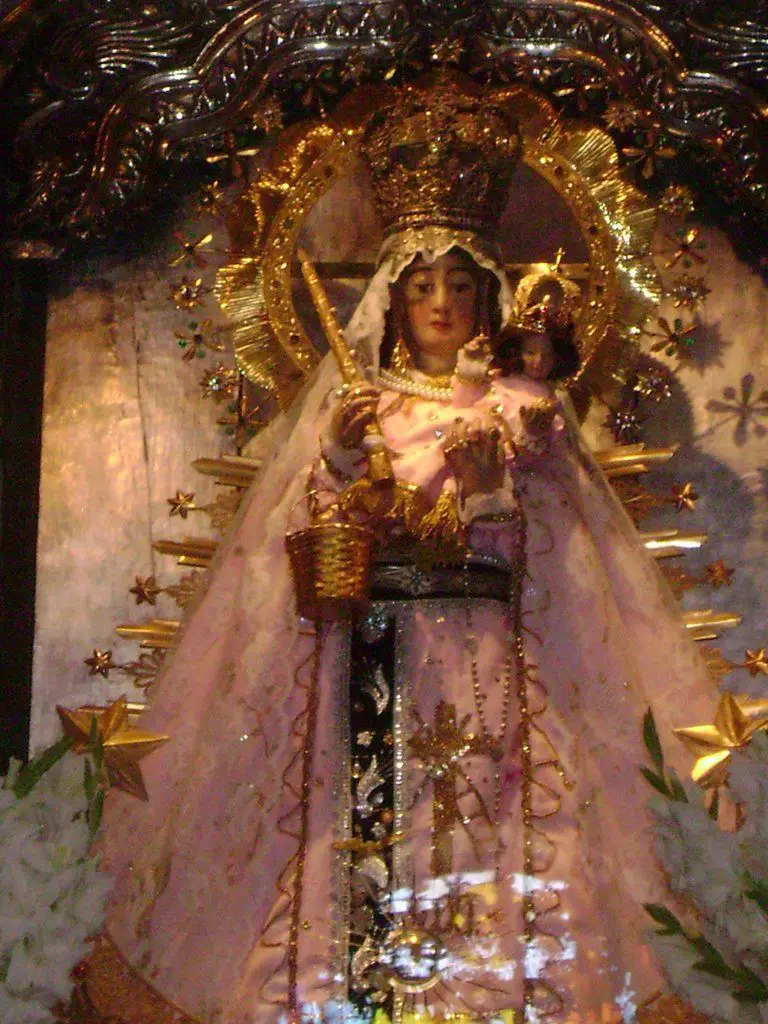
In fact, according to the record, it began to soften because of the Indians’ sweat, so that soon after they began their work, a thick cloud covered them. In this way they were able to alleviate the heat they were experiencing, but at the same time they were irrigating the soil they were working. The other Indians were jealous because the rain only covered the land dedicated to the Virgin of Copacabana.
As this account shows, this was the first miracle performed by Our Lady in the area, indicating her consent to be venerated as the Virgin of Copacabana. In fact, the same miracle happened again, much later. According to the annals of that time, in the year one thousand five hundred and eighty-seven, a great drought affected the whole area; however, in the territory of the Anansayas, and in the whole locality of Copacabana, it rained in such a way that the crops of that year were not lost.
The interesting thing about the miracles of this Virgin is that very few apparitions of the Virgin of Copacabana have been recorded, not to say that her apparitions are non-existent. The miracles that have taken place have to do with the petitions of her parishioners regarding the sowing of crops and other daily problems that affect the region.
Construction of her temple
When the image of the Virgin of Copacabana became famous for the miracles attributed to her, the Augustinians decided to build a large chapel. This happened between the years one thousand six hundred and fourteen and one thousand six hundred and eighteen. In fact, the Count of Lemos, viceroy of Lima at the time, decided to support the construction from the year one thousand six hundred and sixty-eight.
The first main chapel was inaugurated ten years later, in sixteen hundred and seventy-eight. Then, in eighteen hundred and five, a basilica was built in honour of the Virgin of Copacabana. The image was transferred there. As her devotion spread throughout the continent, parishioners from all parts of the continent flocked to her.
As a result, many people donated jewellery, gold and other valuable items to honour and worship the Virgin. However, after the founding of Bolivia, the president, Antonio José de Sucre, decided to expropriate the treasures of this shrine and other places of worship in order to mint the gold and silver coins of Bolivia.
Although the invocation of the Virgin of Copacabana began some five hundred years ago, today many devotees continue to go to the sanctuary to worship her and also to ask her for favours, as well as to pay the promises they have made for the favours they have received.
Celebration of the Virgin of Copacabana
Over time, however, the veneration and worship of the Virgin of Copacabana, also known as the Virgin of the Lake, consolidated. In time, she became the patron saint of Bolivia.
On 29 July 1925, Pope Pius XI crowned the Virgin of Copacabana as Queen of the Bolivian nation. But it was not until the first of August that the liturgical act of her coronation took place, on the occasion of the centenary of Bolivia’s independence.
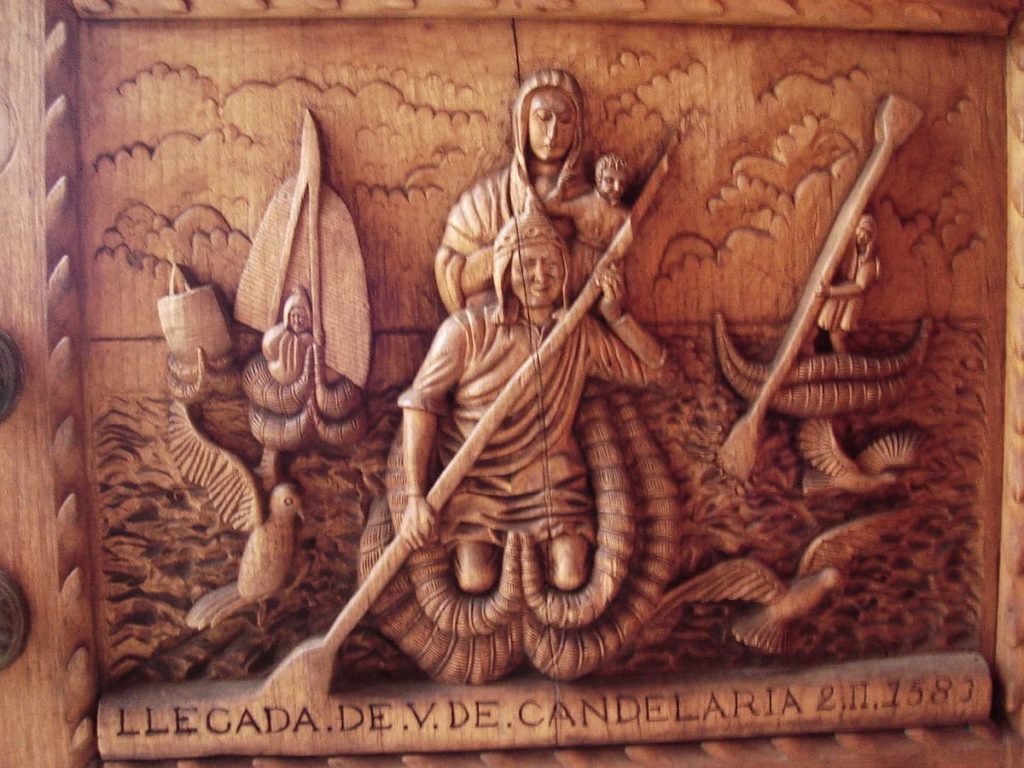
In addition, her patron saint’s day is celebrated every year on the fifth of August. During this time, hundreds of parishioners, both from Bolivia and from other parts of the world, come to her sanctuary to pay homage to her.
Subsequently, in December nineteen fifty-four, the Bolivian National Police declared the Virgin of Copacabana to be the patron saint of their police force and gave her the rank of Generala. In this way, they ask for her protection in the performance of their duties.
Such is the devotion to the Virgin of Copacabana that the police not only made her their patron saint, but she was also the only one to be given a rank within their institution. In nineteen sixty-nine, the Bolivian Navy gave her the rank of Admiral and placed the protection of their souls in the hands of the Virgin.
Although the celebration of this virgin was established on the fifth of August, she also has another date for her veneration and procession: the second of February, the day that corresponds to the purification of Mary as the mother of the Son of God.
Sculpture of the Virgin of Copacabana
As already mentioned, Tito Yupanqui was able to create his replica of the Virgin of Copacabana thanks to his skills as a woodcarver. In fact, this image was carved in maguey wood.
It is also completely covered in fine gold. Her clothes, on the other hand, represent the clothes and colours of Inca princesses. In this way, she gave the Virgin of Copacabana a more personal touch, integrating her cult into the traditions and customs of her people.
On the other hand, due to the numerous offerings and gifts she has received, the figure is constantly covered in luxurious cloaks and costumes sent to her by the parishioners. In fact, she is currently wearing a long wig of natural hair.
The statue is just over a metre high. In addition, in her left arm she carries a child, representing Jesus, in a very unusual position in representations of Mary with Jesus: the child is about to fall, perhaps representing Mary’s confidence in the care and protection of her son.
Later, a basket and a staff were added to the image, which the Virgin holds in her right hand. These belong to the visit of the Viceroy of Peru in 1960.
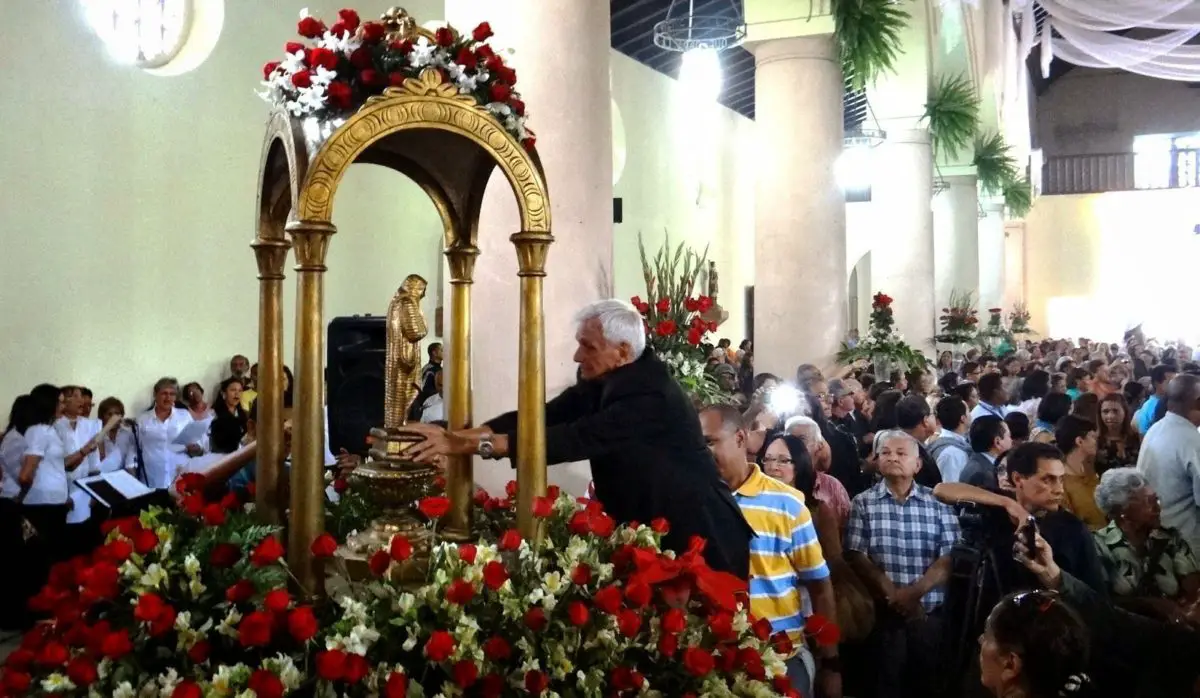
Nowadays, the original image is kept under guard and is never taken out in the processions; instead, a replica or copy of it is used. In fact, during the processions, the parishioners and devotees decide to walk backwards so as never to turn their backs on the Virgin of Copacabana. This is a sign of their affection and love for her and is part of their devotion.
Devotion to the Virgin of Copacabana in other countries
As mentioned above, it is not only in the region of Copacabana and in Bolivia that the Virgin of Copacabana is venerated. She is also venerated in other countries of the American continent, although the liturgical acts vary somewhat.
It should also be noted that in other countries, such as Argentina and Brazil, there are several towns also called Copacabana, and some of them have this Virgin as their patron saint. In fact, in Argentina there are two places with this name, one in the province of Catamarca and the other in Córdoba. Both celebrate their patron saint’s day on the second of February.
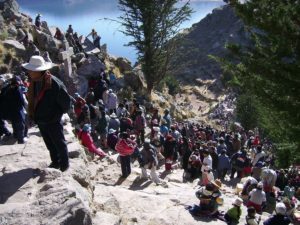
Argentina
In fact, in the capital of this country, Buenos Aires, the devotion to the Virgin of Copacabana has been celebrated since the year nineteen seventy-two, as there is an important Bolivian colony there. In fact, the veneration of this Virgin attracts more than fifty thousand people every year, uniting the Bolivians with the local devotees. The celebrations are held on the second and third Sundays of October.
In the first celebration, the mass is followed by a procession and then traditional groups from Argentina perform. In the second, the celebration is held as it is in Bolivia.
Another place in Argentina where the Marian invocation is celebrated is in the city of Lujan. Since one thousand nine hundred and fifty-six there has been a celebration and procession to the Virgin of Copacabana. It takes place on the first days of February, May and November.
In another place, called Punta Corral, it is said that in July of the year eighteen hundred and thirty-five, the Virgin of Copacabana appeared to a shepherd. For this reason, the parishioners from other surrounding regions make a pilgrimage to this place. This includes a procession with the image of the Virgin of Copacabana.
Spain

In a region called Rubielos Altos, someone brought an image of the Virgin of Copacabana from America in the 17th century. In this region, which belongs to the province of Cuenca, the veneration of this virgin became popular. So much so that she is now the patron saint of the place. To a lesser extent, other places in Spain also celebrate the dedication of this virgin.
Peru
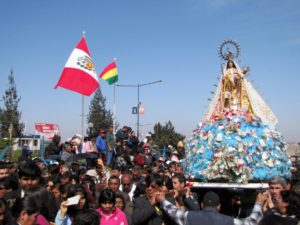
In Peru, the devotion to the Virgin of Copacabana was established mainly in the city of Lima, the capital of the country, at the end of the 16th century. It should be remembered that it was the viceroy of Peru who made the offerings to the Virgin. In addition to the processions, there is also a shrine dedicated to the Virgin. This is called the Archdiocesan Sanctuary of Our Lady of Copacabana. It is worth noting that this is a variation of her name.
Brazil
In Brazil, the invocation was also the result of a miracle. According to one story, the Virgin appeared to a fisherman on a beach. Another story tells of a businessman who, on his way back from Europe, was caught in a storm and his boat began to take on water and he was about to be shipwrecked.
However, being a devotee of the Virgin of Copacabana, he had a replica of the image with him and, like the sailors, he promised to build an altar in her name if they helped him get out of the storm. In this way, the storm subsided, they reached their destination safely and, attributing the miracle to the Virgin, they fulfilled their vow.
In fact, the place where the altar was built also became a place of worship. Located in Rio de Janeiro, it is now also known as Copacabana because of the procession and the construction of the altar in this place, formerly known as the Sacopenapa neighbourhood.
Venezuela
Although in Venezuela the Virgin of Coromoto is the patron saint and the most venerated of all the country’s parishioners, the city of Guarenas, in the state of Miranda, also celebrates a liturgy in honour of the Virgin of Copacabana.
Colombia
Also in Colombia, in the town of Tasajera, the veneration of this virgin began in the year 1200. In fact, the name of this virgin is also the name of the place in the department of Antioquia called Copacabana. In this sense, what happened in Brazil was that because of the devotion to this Virgin, the place was named in her honour.
This shows how widespread the devotion to this virgin is, not only in the countries already mentioned, but also in other parts of the world that cannot be mentioned here for reasons of space. However, the tendency is the same: the veneration or devotion to the Virgin of Copacabana is due to a miracle, such as an apparition, or because someone moved to that place and took the cult of this Virgin with him, thus establishing its festivity.
Prayer to the Virgin of Copacabana
As with many other images of Mary, there are prayers dedicated to the Virgin of Copacabana. It is important to highlight something about this Virgin, which is that her vocation as the bearer of God’s message was to seek out, as it were, those Indians who believed in God but did not have a solid faith or did not accept the icons brought by the Spaniards for their veneration.
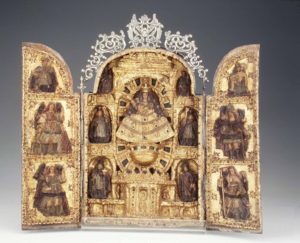
For this reason, these groups of Indians were suspicious of the images brought to them. For this reason, it is said that the Virgin of Copacabana gave the necessary guidance to Tito Yupanqui, who was not only a member of a royal family, as he belonged to the Incas, but was also able to establish the devotion to Mary among the indigenous people of these areas.
Among the many prayers that exist for the Virgin of Copacabana, there is one that stands out because it is very special. It is the one made to her by Pope John Paul II, which is reproduced below in its entirety.
Prayer of John Paul II to Our Lady of Copacabana
Most Holy Mother of Copacabana,
at the close of this liturgical celebration
in which we have prayed together
for the families of Bolivia,
I invoke your maternal protection over them.You, who from your national shrine
accompany the journey of this people with your loving gaze,
encourage with your powerful intercession
the families of Bolivia,
whom I entrust to your care today.Protect and inspire
the mothers of the families of this noble land
who, with admirable dedication
and give stability to their homes,
guide their children along the path of goodness
and seek their dignity in what is Christian and human.Enlighten the parents too
that they may always know how to be, in their family and social life, examples of righteousness,
examples of righteousness,
responsible educators of their children,
models of respect for religious and moral values
that will make the family stable and healthy.Take special care of your children, so that, in imitation of Jesus
that they may grow in age, wisdom and grace,
receiving and spreading in their own homes
love and respect among all.Model their young hearts
so that, with understanding and generosity
Strengthen family unity,
live in obedience to Christian principles
and thus be the support of their parents
and the hope of Bolivian society.Watch over, Mother, with special tenderness
over the peasant families who suffer the scourge of poverty,
over the homes of the miners,
those who have been displaced, those who have neither bread nor work,
the poorest and most abandoned,
so that they may experience your consolation
and the solidarity of others.Finally, teach
all your Bolivian children,
without distinction of ethnic or social origin
to be faithful to the Christian faith,
courage in adversity,
the equal dignity of children and brothers and sisters,
Commitment to the betterment of the common home,
Commitment to honesty and justice,
Hope for a new world
where love and peace will truly reign. Amen.

